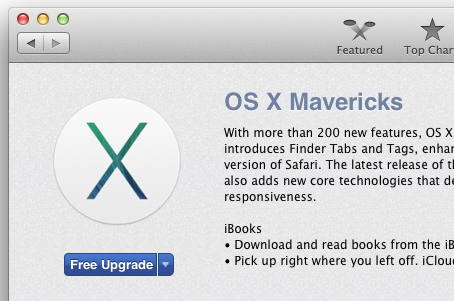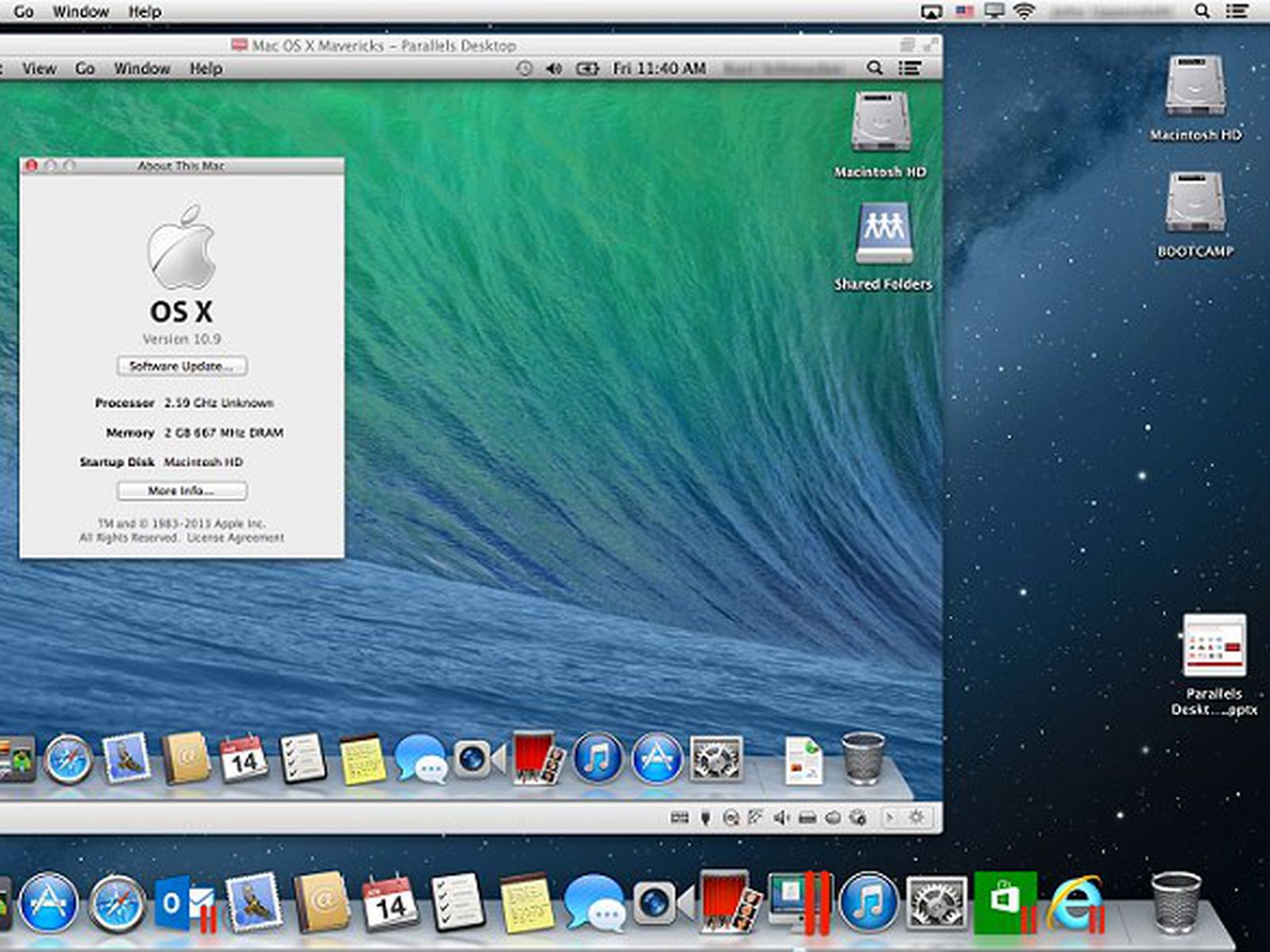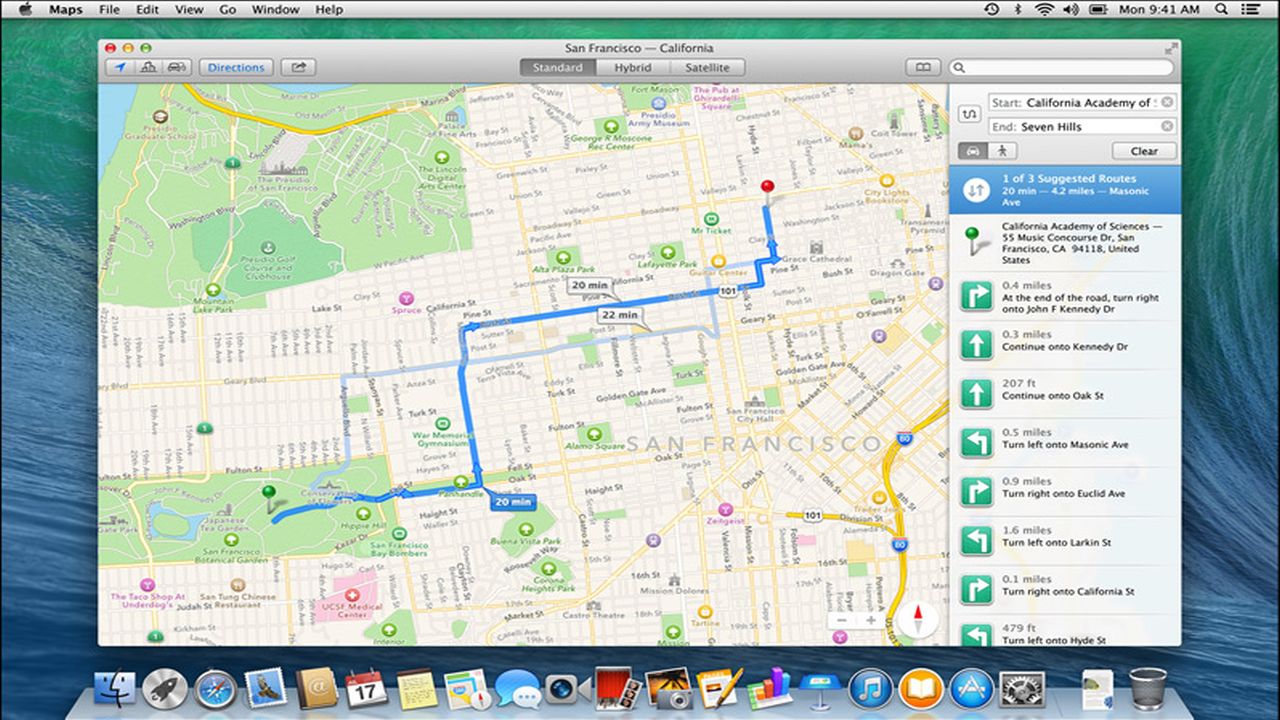- Download Apple Mac OS X Mavericks for Mac to oS X Mavericks is the latest release of the world's most advanced desktop operating system.
- Download Mac OS X Mavericks 10.9.5 free latest version offline setup for MacBook. Mac OS X Mavericks 10.9.5 is a powerful operating system with a variety of enhancements and a variety of new features that delivers more stability and ultimate level of performance.
- Mac Backup Guru, SuperDuper, Carbon Copy Cloner, you can use those tools for Mavericks and clone backup the Mac OS X. Compatible devices for Mac OS X Mavericks download. IMac ( After 2006 iMac versions), Mac Book and Mac Book Black/White (the year 2008 and 2009 upwards), All Mac Book Retina Models, Mac Book Pro 15 inch, Mac Book Pro 17 inch.
- Maverick Mac Os X Download Windows 10
- Download Os X Mavericks Apple
- Maverick Mac Os X Download Windows
These advanced steps are primarily for system administrators and others who are familiar with the command line. You don't need a bootable installer to upgrade macOS or reinstall macOS, but it can be useful when you want to install on multiple computers without downloading the installer each time.
Mac OS X Mavericks 10.9.1 Requisitos para actualizar a OS X Mavericks Sistema operativo: OS X 10.6.8 o posterior. DOWNLOAD MAC OS X LION 10.7 (TORRENT).
Download macOS
Find the appropriate download link in the upgrade instructions for each macOS version:

macOS Catalina, macOS Mojave, ormacOS High Sierra
Installers for each of these macOS versions download directly to your Applications folder as an app named Install macOS Catalina, Install macOS Mojave, or Install macOS High Sierra. If the installer opens after downloading, quit it without continuing installation. Important: To get the correct installer, download from a Mac that is using macOS Sierra 10.12.5 or later, or El Capitan 10.11.6. Enterprise administrators, please download from Apple, not a locally hosted software-update server.
OS X El Capitan
El Capitan downloads as a disk image. On a Mac that is compatible with El Capitan, open the disk image and run the installer within, named InstallMacOSX.pkg. It installs an app named Install OS X El Capitan into your Applications folder. You will create the bootable installer from this app, not from the disk image or .pkg installer.
Use the 'createinstallmedia' command in Terminal
- Connect the USB flash drive or other volume that you're using for the bootable installer. Make sure that it has at least 12GB of available storage and is formatted as Mac OS Extended.
- Open Terminal, which is in the Utilities folder of your Applications folder.
- Type or paste one of the following commands in Terminal. These assume that the installer is still in your Applications folder, and MyVolume is the name of the USB flash drive or other volume you're using. If it has a different name, replace
MyVolumein these commands with the name of your volume.
Catalina:*
Mojave:*
High Sierra:*
El Capitan: - Press Return after typing the command.
- When prompted, type your administrator password and press Return again. Terminal doesn't show any characters as you type your password.
- When prompted, type
Yto confirm that you want to erase the volume, then press Return. Terminal shows the progress as the bootable installer is created. - When Terminal says that it's done, the volume will have the same name as the installer you downloaded, such as Install macOS Catalina. You can now quit Terminal and eject the volume.

* If your Mac is using macOS Sierra or earlier, include the --applicationpath argument, similar to the way this argument is used in the command for El Capitan.
Use the bootable installer
After creating the bootable installer, follow these steps to use it:
- Plug the bootable installer into a compatible Mac.
- Use Startup Manager or Startup Disk preferences to select the bootable installer as the startup disk, then start up from it. Your Mac will start up to macOS Recovery.
Learn about selecting a startup disk, including what to do if your Mac doesn't start up from it. - Choose your language, if prompted.
- A bootable installer doesn't download macOS from the Internet, but it does require the Internet to get information specific to your Mac model, such as firmware updates. If you need to connect to a Wi-Fi network, use the Wi-Fi menu in the menu bar.
- Select Install macOS (or Install OS X) from the Utilities window, then click Continue and follow the onscreen instructions.
Maverick Mac Os X Download Windows 10
Learn more
Download Os X Mavericks Apple
For more information about the createinstallmedia command and the arguments that you can use with it, make sure that the macOS installer is in your Applications folder, then enter this path in Terminal:
Catalina:
Mojave:
Maverick Mac Os X Download Windows

High Sierra:
El Capitan:
The new OS offers over 200 features from its predecessor, Mountain Lion giving real value to the Mac user and enough reasons to upgrade. So if you’re reading this article, I’m sure you’re also thinking the same. This introduces Maps and iBooks to the Mac user and it also includes a more enhanced version of Safari. It also introduces Finder Tabs and improves the internal performance of the Mac as well as its power efficiency, simply increased battery life.
The iBooks lets you create your own library within your Mac device. By launching iBooks on your Mac, it provides you quick access to the books in your library but more importantly, it gives you access to millions of books in Apple iBooks store which can be bought online. You only need to add it to your library once and it will be available across all your Apple devices, which is a really great feature from a user experience point of view. Maps, on the other hand, brings you a very powerful application to search places, calculate distances between places, schedule trips and even access them from your iPhone to get directions while you’re driving on the road.
The compatibility to use the application across multiple apple devices adds a lot of value to both iBooks and Maps. The new download Mavericks also brings an improved Calendar to you which is capable of calculating the time between your daily appointments and suggest you with directions on Maps. The new and improved Safari introduces you to share links, which lets you consolidate links shared by your followers on Twitter and LinkedIn. Performance wise it brings multi-display support for Mac enabling users to easily switch between displays with minimum or no configuration requirements.
Is Your Device Ready For Download Mavericks?
The new Mac OS X is compatible with any Mac PC that was previously running Mac OS X version 10.8 - Mountain Lion. Apart from that any Mac device that is running on Snow Leopard (Mac version OS X 10.6.8) or later which has 2GB RAM and 8 GB of free internal storage is fully compatible to receive the download Mavericks upgrade.

The following Mac devices are considered to be fully compatible to run Mac OS X Mavericks.
- iMac (The year 2007 and above)
- 15 inch Mac Book Pro (The year 2007 or later)
- 2008 Mac Book Air or later
- Mac Pro (The year 2008 or later)
- 13 inch Mac Book Pro (The year 2009 or later)
- Mac Mini (The year 2009 or later)
- Xserve (The year 2009)

Although the above set of Mac devices are compatible with the download Mavericks upgrade, several features such as multi-display, Power Nap will be available only for selected models.
Likewise, although the recommended hardware requirement is 2 GB RAM and 8 GB of free hard disk space for running download Mavericks, speaking from experience it would run a lot smoother on 4GB memory and if you have 15GB – 20GB free internal storage space. This depends highly on your current Mac OS X version. If you having an earlier version than Mountain Lion, then it is advised to have more space over 12 GB to have a smooth day to day experience.
